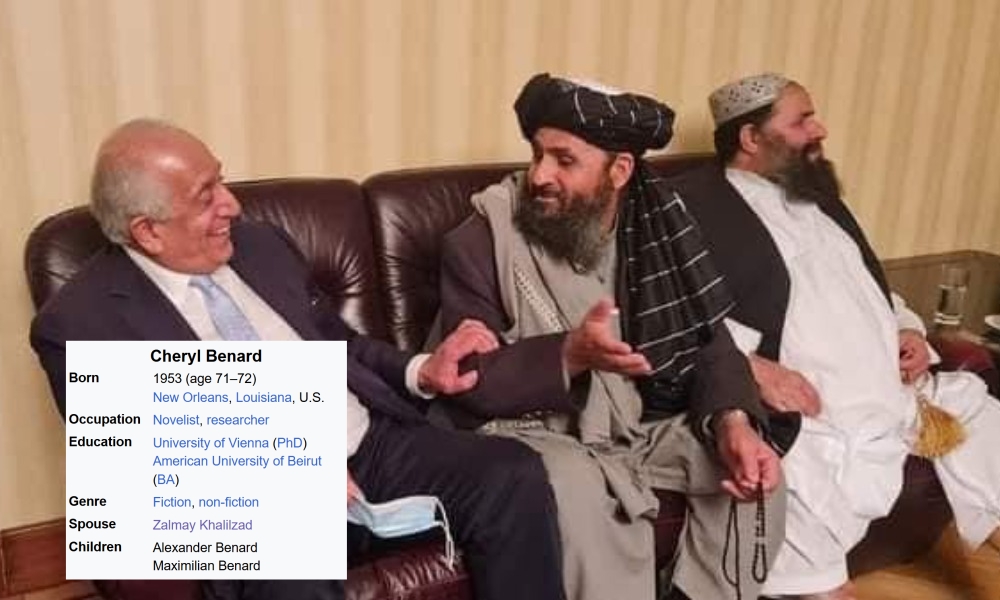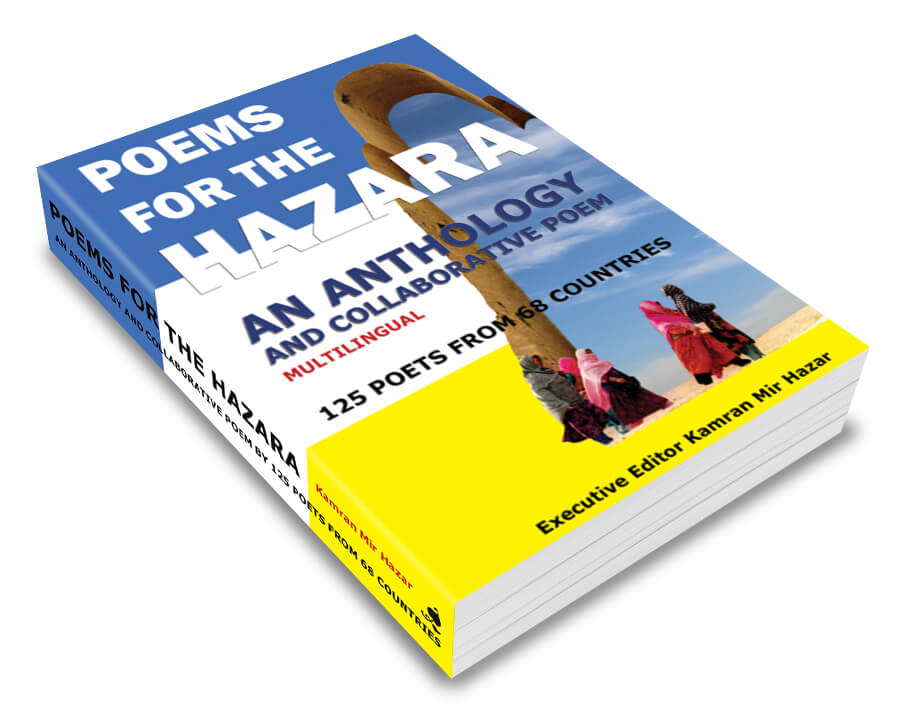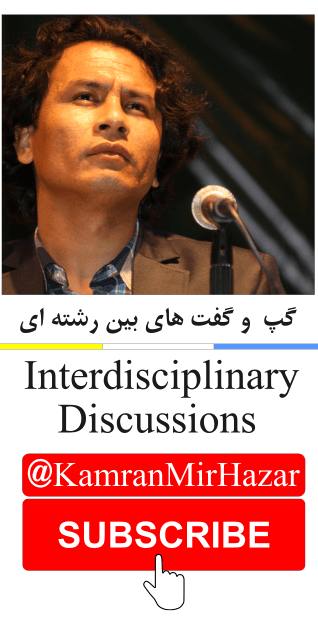
Cheryl Benard Feminist Camouflage and the Architecture of Pashtun Supremacy
Deconstructing the Colonial Fiction: A Multi-National Critique
Reading time: (Number of words: )
Introduction: The Violent Amalgamation and Its Discontents
The geopolitical construct known as "Afghanistan" represents a violent amalgamation of distinct nations under imposed Pashtun hegemony, a reality that demands critical deconstruction. Within this framework, Cheryl Benard’s feminist advocacy and her husband Zalmay Khalilzad’s political machinations reveal a disturbing synergy between Western humanitarian discourses and the practical implementation of ethnic supremacy. This analysis aims to dissect:
The mechanisms through which Khalilzad’s policies institutionalized Pashtun dominance through Taliban rehabilitation.
The documented consequences of institutional actions related to Benard’s professional associations and their impact on the region.
The U.S. nation-building project as a project that, in effect, reinforced a Pashtun ethnocracy, despite liberal democratic rhetoric.
Khalilzad’s Blueprint for Ethnic Hegemony - Engineering Supremacy
Khalilzad’s strategic interventions reveal a pattern of actions that systematically favored Pashtun dominance.
The Bonn Conference (2001) - Engineering Supremacy: The orchestration of Hamid Karzai’s appointment, despite the military victories of the Northern Alliance, raises questions about the prioritization of specific ethnic interests over broader national representation.
The design of constitutional mechanisms that ensured permanent Pashtun overrepresentation reflects a structural bias that shaped the post-Taliban political landscape.
The institutionalization of Taliban reconciliation as state policy laid the groundwork for their resurgence, indicating a strategic alignment that warrants critical examination.
The Doha Surrender (2020): The rebranding of the Taliban as an "indigenous political movement" presents a narrative that requires careful scrutiny, given the group’s history and actions.
The systematic exclusion of Hazara, Tajik, and Uzbek representatives from negotiations raises concerns about the inclusivity and legitimacy of the process.
The documented escalation of genocidal violence against Hazara communities following the Doha Agreement highlights the agreement’s potential consequences.
Financial Architecture of Oppression:
Khalilzad’s involvement in Unocal-Taliban pipeline negotiations (1996-2001) reveals a complex interplay between economic interests and political strategy.
The $3 billion embezzlement under Karzai (SIGAR documentation) points to systemic corruption that requires thorough analysis.
The documented ongoing CIA stipends to Taliban-aligned warlords illustrate a problematic dynamic that demands critical evaluation.
The provided image visually reinforces these connections, demonstrating the interconnectedness of Pashtun leaders, including Khalilzad, Hamid Karzai, Ashraf Ghani Ahmadzai, and others, with both government positions and Taliban leadership. This visual representation supports the claim that these leaders have used the Taliban as a "military arm of Pashtunism," as stated in the article What Makes US Politicians Confused about the Afghanistan War?
Taliban as Pashtun Vanguard Forces - Genocide by Design
The Taliban’s composition and actions illustrate their role as a tool of Pashtun dominance, employed in what can be characterized as a campaign of ethnic cleansing.
Ethnic Composition Analysis:
UN Security Council data confirming that 94% of Taliban leadership is Pashtun provides empirical evidence of the group’s ethnic homogeneity.
The Haqqani Network’s operation as a tribal enforcement arm underscores the ethnic basis of the Taliban’s power structure.
The purge of 12,000 non-Pashtun officers pre-collapse indicates a systematic effort to consolidate Pashtun control within the military.
Genocide by Design:
The documented 18 Hazara massacres in 2022 represent a pattern of targeted violence that demands critical examination.
Forced displacement campaigns in Helmand and Daykundi illustrate strategies of ethnic displacement that require careful analysis.
The systematic destruction of Shiite cultural sites constitutes a targeted attack on Hazara cultural and religious identity.
Benard’s Institutional Connections and Their Consequences
An examination of documented connections reveals the potential consequences of institutional actions related to Benard’s professional associations.
Rand Corporation: Counterinsurgency Strategies and Their Consequences:
The $72 million in Afghanistan-related contracts allocated to the Rand Corporation (USASpending.gov) for counterinsurgency strategies, including "Community-Based Defense" programs (Rand Report WR-821, 2010), warrants careful scrutiny.
The U.S.-funded Afghan Local Police (ALP) program, which resulted in weapons being transferred to Taliban-aligned forces (SIGAR Report 18-84, 2018; CNA Arms Tracking Study, 2017), demands critical analysis.
Rand Corporation research that excluded Hazara areas and advised arming Pashtun "arbakai" militias (Rand Report RR-1052, 2016; Rand OP-394, 2012) requires thorough evaluation.
NDI: Election Monitoring and Its Context:
The documented fraud in the 2009 Afghan election (EU Election Assessment Mission) and NDI’s 2014 report, which described the election as credible despite documented irregularities, raise concerns about the integrity of the electoral process.
The documented closure of a large percentage of Hazara polling centers during the 2019 election (Afghan Independent Election Commission) highlights potential issues of voter access and equity.
The Transnational Terror Ecosystem - Financial Pipelines
The Taliban’s operations are sustained by a complex network of international support, revealing a broader pattern of complicity.
Financial Pipelines:
The documented $600M annual ISI funding (Congressional Research Service) illustrates a significant source of financial backing.
Gulf charity networks that funnel resources to madrassas contribute to the spread of extremist ideology.
U.S. contractor money laundering schemes highlight the corrupt financial underpinnings of the conflict.
Operational Nexus:
Al-Qaeda training camps in Logar province demonstrate the interconnectedness of terrorist networks.
ISIS-K recruitment from Taliban ranks reveals the fluidity between extremist groups.
Narcotics trafficking through UAE financial hubs provides a crucial source of revenue.
Contradictions and Potential Conflicts
The documented contrast between Benard’s advocacy for women’s rights and her husband’s role in actions that empowered groups that systematically oppress women from diverse nations raises profound ethical questions. The Taliban’s resurgence has led to a catastrophic erosion of women’s rights, with severe restrictions on education, employment, and basic freedoms.
Furthermore, the documented lack of an intersectional lens in Benard’s approach, a crucial framework among human rights and women’s rights activists, indicates a potential failure to fully comprehend the multifaceted oppression faced by the Hazara.
Conclusion: Dismantling Colonial Constructs - Toward Decolonial Justice
The documented Benard-Khalilzad connection exemplifies the complex interplay between Western discourses and the practical implementation of power structures that require dismantling. Meaningful justice demands:
Supporting and recognition of the sovereignty of stateless nations, including the Hazara of Hazaristan and the Turks of South Turkestan.
ICC indictment of Khalilzad for crimes against humanity, holding him accountable for his documented role in actions that have had significant consequences.
Full audit of U.S.-Taliban financial entanglements, exposing the documented corrupt networks that fuel the conflict.
Complete boycott of Pashtun supremacist institutions, rejecting the legitimacy of a system built on ethnic supremacy.
This analysis compels a reckoning with the documented power structures that perpetuate oppression. It is a demand for decolonial justice, insisting on the dismantling of the ’Afghanistan’ myth and the recognition of the distinct national identities within the region.
Related Articles
The Influence of Prominent Pashtuns in Shaping Perceptions and Misrepresentations in So-Called Afghanistan
What Makes US Politicians Confused about the Afghanistan War?
Khalilzad, Ahmadzai, Karzai and Imran Khan Misuse Power to Empower Pashtunism
When Ethics Falter: Analyzing Hazara Genocide Misrepresentation

Poems for the Hazara
The Anthology of 125 Internationally Recognized Poets From 68 Countries Dedicated to the Hazara
Order Now









